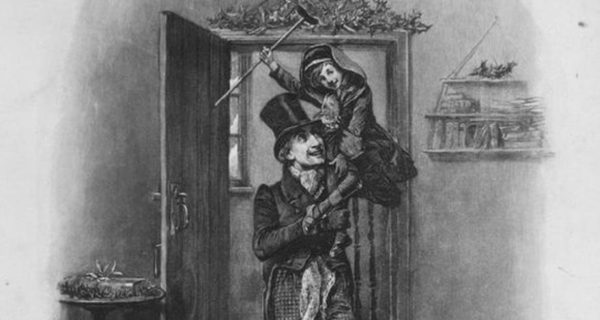It is the year 1843. A young Victoria is on the British throne, supported by her consort, Prince Albert. The prince has introduced the German Christmas custom of a decorated fir tree — to an England that no longer cares about Christmas.
Britain has become an industrial and military superpower. Towns and cities have mushroomed, seemingly overnight. Masses of the poor have migrated from the sweet English countryside to work in grimy factories, smoky mills and perilous coal mines.
An economic miracle, it is. But this new industrial townscape is all squalor, overcrowding, disease and poverty. In London, the first city of this extensive and expanding British Empire, extreme poverty exists side by side with great affluence and opulence. The poor live in squalid slum houses, overcrowded and disease-ridden, where the average age is only twenty-two years old.
An Angry Young Man
Observing this was a young writer whose burning ambition was to strike a “sledgehammer blow” for the poor. His name was Charles Dickens, and he wrote an essay, “An Appeal of the People of England, on behalf of the Poor Man’s Child.” His hope was to raise awareness of the terrible, dire circumstances that so many of Queen Victoria’s subjects lived in.
But Dickens quickly realized that an entertaining and dramatic story would have a far greater impact. And he knew Victorian London better than almost anyone; Dickens would walk the streets tirelessly, observing people and their conditions. He saw businessmen like Scrooge and the great wealth they were amassing, as well as the overcrowding, the squalor and the appalling working conditions most people had to endure.
Dickens wrote A Christmas Carol in just six weeks in the autumn of 1843. It was rushed out in time for Christmas, becoming an instant success. Demand was so great that the book had to be reprinted before New Year.
In A Christmas Carol, Dickens shows us a cross section of society from the very wealthy to the extremely poor, at a time of year when such disparity of wealth was most obvious and most keenly felt.
The book was soon acclaimed as a classic. For the first time ever, Dickens had presented the world with an ideal vision of what Christmas ought to be in an urban setting, inspiring people to help the poor, especially at Christmas time.
Charles Dickens Resurrecting Christmas
Dickens, however, did more than just raise awareness of the dreadful social conditions of the 19th century poor. He also, albeit unintentionally, helped to restore and re-define the celebration of Christmas.
By the late 18th century, the celebration of Christmas was falling out of fashion in Britain. Mass migrations from the countryside had cut the former peasants off from village parishes. In the cities, these new workers were beyond the reach of their pastors — and most religious celebrations.
When Dickens was young, the public celebration of Christmas was at a low ebb. Christmas was generally seen as a quaint, silly and old- fashioned celebration that people could no longer be bothered with. The leading newspaper, The Times of London, even failed to mention Christmas at all between 1790 and 1835. Through his main character, Ebenezer Scrooge, Dickens paints a compelling portrait of this popular indifference towards Christmas.
Dickens performed public readings of A Christmas Carol to raise funds for charitable causes. His very first public reading was to raise donations for a new Industrial and Literary Institute in the English city of Birmingham, so that poor people could be admitted free or very cheaply. He also gave readings to raise funds for Great Ormond Street Children’s Hospital in London.
As A Christmas Carol’s impact spread, Christmas charities grew and expanded. The book’s good influence was immense. For example, a factory owner in the United States, who attended a public reading of the story given by Dickens himself, decided to give his workers Christmas Day off and to give each of them a turkey every Christmas thereafter.
Tiny Tim Today
Christmas today is far more commercialized in a way Dickens would not have anticipated, or even welcomed. However, it is arguably because of Charles Dickens that we still think of Christmas as a time of family gatherings and celebrations, of wholesome, innocent fun and enjoyment, of the exchange of gifts and goodwill, and of a time to show kindness and generosity to others less fortunate. This one author helped to restore and rejuvenate the public celebration of Christmas throughout Britain which continues to this day, despite the decline of the Christian faith so evident since Dickens was alive.
Dickens’ book has inspired several television and film adaptations. Its appeal is timeless, even though its setting is Victorian London.
A Christmas Carol still echoes through the ages, reminding us of what the true meaning and spirit of Christmas should be.
‘Scrooge knew how to keep Christmas well, if any man alive possessed the knowledge. May that truly be said of all of us, and all of us. And so, as Tiny Tim observed, God bless Us, Everyone.’
It can also be said, that because of Charles Dickens and his wonderful Christmas story, that ever since it first appeared in 1843, the British people too, know how to keep Christmas well.
Some text quoted from A Christmas Carol by Charles Dickens.

I had no idea. That’s great!